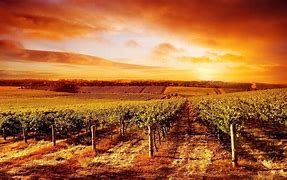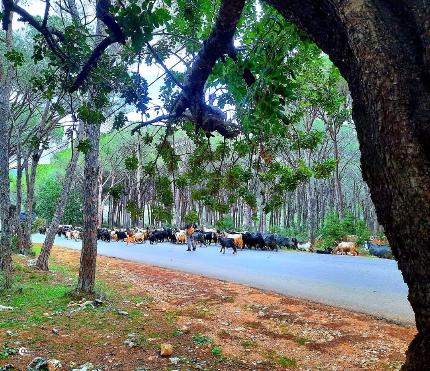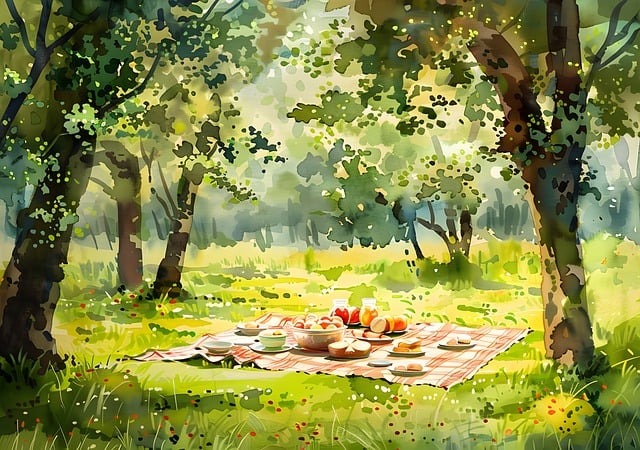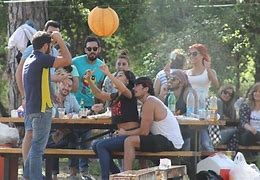THINGS TO DO IN JOUN

Joun, cradled within the majestic Chouf Mountains of Lebanon, invites adventurers to explore its enchanting natural wonders. Whether you seek tranquility or exhilaration, Joun, as it is the case of most of the Chouf towns, offers a tapestry of outdoor activities that celebrate its rich heritage and breathtaking landscapes.
Mountain Adventures
- Hiking Trails:
- Verdant Hills: Embark on scenic hikes through lush hillsides, where wildflowers bloom and birds serenade your journey.
- Historical Paths: Follow ancient trails that connect villages, revealing centuries-old stories etched into the landscape.
- Rock Climbing:
- Chouf Crags: Scale rugged cliffs and limestone formations, challenging your agility and strength.
- Panoramic Views: Reach summits for sweeping vistas of terraced vineyards, olive groves, and the Awali River below.
- Cave Exploration:
- Hidden Depths: Delve into Joun’s extensive cave systems awaiting your discovery.
River Escapades
- Awali River Gorges:
- Rafting and Kayaking: Ride the rapids of the Awali River, feeling the rush of cool water against your skin.
- Canoeing: Descend through narrow gorges, rappelling down waterfalls and immersing yourself in nature’s amphitheater.
- Picnics by the River:
- Shaded Banks: Spread a blanket under ancient trees along the riverbanks. Feast on local delicacies while the water murmurs nearby.
- Birdwatching: Spot herons, kingfishers, and other winged residents as they flit among the reeds.
- Fishing:
- Tranquil Pools: Cast your line into serene pools, hoping for a catch of freshwater trout or carp.
- Reflections: Watch the mountains mirror themselves in the calm waters, creating a serene backdrop for your angling adventure.
Community Bonding
- Scout Camps:
- Youth Gatherings: Scouts and youth groups find camaraderie around campfires, sharing stories and forging lifelong friendships.
- Leadership Skills: Learn teamwork, survival techniques, and environmental stewardship in Joun’s natural classroom.
- Educational Excursions:
- School Outings: Students explore history, geology, and ecology firsthand, connecting classroom learning to the real world.
- Archaeological Sites: Visit ancient ruins and imagine the lives of those who once inhabited these lands.
- Family Adventures:
- Multigenerational Fun: Families picnic, hike, and play by the river, creating cherished memories against the backdrop of Joun’s beauty.
- Shared Experiences: Grandparents, parents, and children bond over shared laughter and exploration.
The town residents, are passionate about outdoor adventure activities, and the outdoor environment, they have a respect for the environment in which they live and work, with a minimal impact sustainable use environmental policy.
In Joun, the mountains echo with whispers of the past, and the river flows as a timeless witness to unity. Whether you seek adrenaline or serenity, let Joun’s natural embrace be your guide—a place where history, culture, and adventure converge in harmonious celebration.
Source: Lebanon Traveler.com (Chouf)





HIKING in the TOWN OF JOUN

Ah, the beauty of hiking in the town of Joun—a symphony of earth and sky, where each step is a note, and the trail unfolds like a timeless melody.
Imagine this:
*The Forest’s Embrace*: You step onto the trail, surrounded by towering trees. Their leaves whisper secrets, and sunlight filters through the canopy, dappling the ground. The earth cradles your feet, connecting you to ancient roots.
*Vistas Unveiled*: As you ascend, the world opens up. Rocky outcrops reveal sweeping vistas—the valley below, a patchwork of greens and blues. Your breath catches, and you feel small yet part of something grand.
*Sunrise Serenade*: Early mornings bring magic. You hike in darkness, guided by moonlight. And then—the sun peeks over the horizon. Colors ignite: oranges, pinks, golds. Birds join in, their songs harmonizing with daybreak.
*Mountain Streams*: You cross babbling streams, their icy waters refreshing. Stones become stepping stones, and you balance, feeling the rush of life around you. Maybe you dip your hands, cupping water to your lips.
*Wildflower Waltz*: Spring paints the trail with wildflowers. Lupines, Indian paintbrush, and delicate blooms carpet the meadows. Each petal holds a promise—a fleeting beauty, like a whispered secret.
*Summit Triumph*: Finally, you reach the summit. The air thins, and your heart swells. Below, valleys stretch like green oceans. You’ve climbed, not just in elevation, but into your own resilience.
*Silent Conversations*: Hiking invites introspection. You listen—to the rustle of leaves, the wind’s sigh, your own heartbeat. Thoughts unravel, and clarity emerges. Maybe you find answers or simply peace.
And as you descend, legs tired but spirit soaring, you carry the mountain within you. The beauty of hiking isn’t just in the views—it’s in the journey, the connection to nature, and the stories etched into your soul.
So go forth, fellow wanderer. Lace up those boots, follow the trail markers, and let the beauty of hiking in the town of Joun weave its magic.

Joun, with its rolling hills and scenic beauty, offers several delightful hiking trails for nature enthusiasts. Lace up your hiking boots and explore the following trails:
Joun to Deir el-Moukhalles Trail:
– This trail leads from Joun village to the Deir el-Moukhalles Monastery. The path winds through olive groves, pine forests, and ancient stone terraces. Along the way, you’ll catch glimpses of the Mediterranean Sea and the surrounding mountains. The monastery itself is a serene spot to rest and take in the views.
Joun Olive Grove Trail:
– Explore the picturesque olive orchards surrounding Joun. The trail meanders through centuries-old olive trees, their gnarled trunks telling stories of generations past. Breathe in the earthy scent of olives and enjoy the peaceful ambiance.
Eshmun Temple Trail:
– For history buffs, this trail connects Joun to the Eshmun Temple, an ancient Phoenician sanctuary dedicated to the healing god Eshmun. The temple ruins are nestled in the hills near Sidon. The hike offers a blend of nature and archaeology.
Joun Sunset Ridge Trail:
– As the name suggests, this trail is perfect for catching mesmerizing sunsets. Follow the ridge as it curves around Joun, providing panoramic views of the Chouf Mountains and the coastal plains. Bring your camera to capture the golden hour magic.







THE AWALI VALLEY - BISRI TRAIL
AWALI – BISRI TRACK BY TONY AOUN ( https://www.wikiloc.com/hiking-trails/track-03-marej-besri-41113281)
ALSO SAMI BEYDOUN: (https://www.wikiloc.com/hiking-trails/hammam-bridge-deir-mkhalles-joun-33421920)

VIDEO BELOW: AWALI RIVER VALLEY – BISRI: DRONE BY BASHIR CHOUCAIRE


MORE TRAILS TO EXPLORE...
The three Videos Below by Hamza Eid BaldatJoun FB page
Explore more Joun trails ,… Joun famous for olive oil, carob, Bou-sfeir, Lemon and Orange Blossoms: EXHALE … BREATHE






Joun,… in Iqlim Al Kharrob is also famous for Carob Trees (Kharroub), and of course the well known Olive Oil




Through Olive trail in Joun… Why not Visit the Olive Presses too




Through vineyards and valleys on the vineyards trail in Joun



Keep Exploring …



Bisri – Eshmun Trail … KEEP WALKING
LIVE THE AWALI RIVER EXPERENCE
Dip and Refresh …






BELOW PHOTOS SOURCE: ANTHONY RAHAYEL, MECHWAR BEL WADI SERIES: KARKHA - YOUTUBE: AWALI RIVER





Keep Exploring…
Photos Below: By Marwan Al Rabih: Awali River Valley Bisri





ABOUNA BECHARA ABOU MRAD YEARLY RELIGIOUS WALK AND PILGIMAGE TO DEIR AL MOKHALLES


The Abouna Bechara Abou Mrad Yearly Spiritual Walking Event
This is a yearly pilgrimage route that transcends mere walking; it’s a transformative event, a journey that pays homage to Abouna Bechara Abou Mrad, and a cross country gathering of thousands of pilgrims all in one. Abouna Bechara Abou Mrad has been recently Beatified by the Catholic Church and the Vatican.
The Abouna Bechara Abou Mrad Spiritual Pilgrimage to Deir Al Mkhalles is an all year round Event
The Abouna Bechara Abou Mrad yearly spiritual walking event is a commemorative occasion that honors the life and legacy of Venerable Bechara Abou Mrad, a Melkite priest and monk who is venerated in the Catholic Church, particularly in the Melkite Greek Catholic Church1. He was born on May 19, 1853, and passed away on February 22, 19301. The event likely involves a pilgrimage or procession that reflects the spiritual journey and monastic life that Abouna Bechara Abou Mrad led.
If you’re looking to participate or learn more about this event, we would recommend contacting the Holy Saviour Monastery in Joun or Sidon, Lebanon, where Abouna Bechara is buried, or the local Melkite Greek Catholic community, as they would likely have the most accurate and up-to-date information.



The Trail to the Picturesque Valley of Sayedat Al Waara Church
If you are looking to participate or learn more about this event, we would recommend contacting the Holy Saviour Monastery in Joun or the local Melkite Greek Catholic community, as they would likely have the most accurate and up-to-date information.
CAMPING in the TOWN OF JOUN

Ah, the beautiful experience of camping in Joun and vicinity —a communion with nature, where the stars become your ceiling and the earth cradles your dreams.
Imagine this:
*Campfire Tales*: You gather around a crackling fire, its warmth chasing away the night’s chill. Friends share stories—ghostly whispers, epic adventures, and childhood memories. The flames dance, casting shadows on your faces.
*Starry Canopy*: You lie on a blanket, staring up at the vast sky. Stars twinkle like ancient secrets, constellations weaving tales of gods and heroes. The Milky Way spills across the darkness, and you feel both insignificant and connected.
*Forest Lullaby*: The rustle of leaves, the hoot of an owl—it’s a symphony. You drift to sleep in your cozy tent, cocooned in a sleeping bag. The forest breathes around you, crickets singing you into dreams.
*Dawn Awakening*: Morning arrives—a gradual unveiling. Birds stretch their wings, and dew-kissed grass sparkles. You emerge from your tent, rubbing sleep from your eyes. Coffee brews, and the sun paints the horizon.
*Campfire Breakfast*: You cook over an open flame—pancakes sizzling, toast bread crisping. The smell alone is nourishment. Maybe you forage for wild berries or fish in a nearby stream. Nature provides, and you are part of it.
*Trail Wanderings*: Backpack slung over your shoulders, you explore. The trail leads to hidden superb scenes, moss-covered boulders, and vistas that steal your breath. Each step is an invitation—to discovery, to presence.
*Leave No Trace*: You pack out what you brought in. Respect for the land is woven into your soul. You extinguish the fire, leaving only ashes. The forest whispers its gratitude.
And as you bid farewell, you carry the scent of pine, the echo of laughter, and the promise of return. The beautiful camping experience is not just about tents and gear—it is about wonder, simplicity, and finding solace under the open sky.
So go forth. Camp in Joun and may your nights be star-studded, your trails winding, and your heart full.








ENJOY THE AWALI RIVER
Video below by Kameel Rayes: Marj Bisri
Video below by Mahmoud: Solo Camping, Marj Bisri, Bisri Valley

CYCLING in the TOWN OF JOUN

Ah, the *beautiful bicycling experience in the town of Joun*
Picture this: You’re pedaling along a sun-kissed trail, the wind whispering through your hair. The world blurs into a vibrant mosaic of greenery, and your worries fade away. Each rotation of the pedals feels like a dance, a rhythmic communion with nature.
The Town of June unfolds before you—a canvas of lakes, golf courses, and charming streets. The scent of blooming flowers mingles with the fresh air. Birds serenade you from the branches, their melodies harmonizing with the soft hum of your tires.
As you pedal, you notice the details: the way sunlight dapples the pavement, the laughter of families picnicking by the lake, and the occasional wave from fellow cyclists. Maybe you stop to sip water, feeling the sun’s warmth on your skin.
And when you reach a hill, you lean forward, muscles straining, heart pounding. But the view from the top—the reward—is worth it. The world stretches out, a panorama of possibility. You coast downhill, exhilaration bubbling up inside you.
At sunset, you find a quiet spot to rest. The sky blushes pink and orange, a masterpiece painted just for you. You breathe deeply, grateful for this simple joy—the freedom of two wheels and open roads.
So, embrace the beautiful bicycling experience in the town of Joun. Let it carry you away, pedal stroke by pedal stroke, into moments of pure bliss.
Photos below By Haig Melikian: Cycling Across the Scenic Deir Al Mokhalless Woods




Routes to Other Neighboring Towns




PICNICKING in the TOWN OF JOUN

Ah, the beautiful picnicking experience in the town of Joun
Picture this: You spread a soft blanket on a sun-dappled meadow. The grass tickles your legs as you sit cross-legged, surrounded by loved ones. A wicker basket overflows with delights: crusty baguettes, creamy cheeses, and juicy berries.
*Feast of Flavors*: You unwrap sandwiches—layers of smoked turkey, crisp lettuce, and tangy mustard. The first bite is a symphony of textures and tastes. Nearby, a bottle of chilled rosé awaits, its blush echoing the sunset.
*Nature’s Table*: The breeze carries scents—wildflowers, freshly mown grass. Birds serenade your meal, and ants march in single file, eyeing crumbs. You laugh, brushing away a ladybug that lands on your hand.
*Shady Canopy*: The oak tree above provides shelter. Its leaves filter sunlight, casting dappled patterns on your picnic spread. You lean back, feeling the earth cradle you, and close your eyes.
*Sweet Finale*: Dessert arrives—a strawberry tart, its crimson berries glistening. Each bite bursts with summer. You share forkfuls, laughter, and stories. Time slows; worries fade.
*Golden Hour*: The sun dips lower, casting long shadows. The world turns golden, and you savor this suspended moment. Maybe you lie back, watching clouds drift, feeling utterly content.
And as the day wanes, you gather your memories, fold the blanket, and leave only footprints. The beautiful picnicking experience isn’t just about food—it’s about connection, laughter, and the simple joy of being alive.
So go forth, May your baskets be full, your company delightful, and your heart light.









RAS QATEEAH AND SURROUNDINGS: A PICTURESQUE OUTDOOR DESTINATION

CHALETS AND BUNGALLOWS IN JOUN
If you are looking for a cozy getaway or planning a celebration, the chalets and bungalows in Joun offer an excellent choice. Here are some options to consider:
This beautifully decorated stone private chalet and pool: Le Paradis Des Souhaits




RESTAURANTS IN JOUN


USEFUL HIKING RESOURCES
Hiking Groups in Lebanon
SOME HIKING GROUPS IN LEBANON:
– Lebanon By Nature
– Lebanese Explorers
-Vamos Todos
-Highkings961
-Leave No Trace
-Mountleb Wanderers
-On Foot We Go
Guide to Hiking Skills
JOUN VILLAGE TOURISM: MORE PLACES OF INTEREST IN TOWN
Village tourism refers to the practice of visiting rural villages as a form of travel experience. These villages often have inhabitants who are traditionally involved in primary industries like fishing, agriculture, and mining. Over time, changes in economy and society have led to many village communities embracing tourism. The appeal of village tourism lies in its combination of physical, historical, and nostalgic attributes, offering visitors a glimpse into a microcosm of community life. Whether set in rural areas or as independent attractions, villages provide an opportunity to encounter another way of life and discover the regional character of a country. So, if you’re curious about exploring the traditional lifestyle of the Town of Joun, village tourism might be just the thing for you!
THE RICH HERITAGE OF BISRI VALLEY
The Bisri Valley displays distinct geological and ecological features that foster sensitive agricultural practices, dotted by countless archaeological remains and places of worship that testify of its historical, strategic and religious importance across all periods of history. It is a cultural landscape that shows a clear balance between a natural environment and human activities that shaped, developed and gave meaning to the landscape. One can consider it to be a part of a wider “Cultural Landscape of the Sacred Valley of Eshmoun”, centered on the entire course of the Awali/Bisri river.
The Bisri Valley holds great historical, cultural and religious significance. In the direct hinterland of the ancient city of Sidon, … the valley has known uninterrupted human occupation since the Bronze Age. Around 70 identified archaeological sites; settlements, tombs, fortresses, ruined convents, a temple, bridges, roads, stairs; testify of this rich history. Even the name “Bisri” is a derivative of “Bostrenos”, the river’s name in Hellenistic times. Located on the edge of the same water course, the famous temple of Eshmoun north of Saida and the Roman- period temple of the Bisri Valley had a symbolic connection and were located on the same pilgrimage route. Indeed, the river used to also be named “Asclepios” which is the Greek equivalent of Eshmoun. A religious importance that lived on after the advent of Christianity, with historic churches and convents dotting the valley (Atallah, 2017).
Source:
- Lebanon Eco Movement (LEM): Request for an Inspection On the Impacts of the Bisri Dam Project in Lebanon
- https://en.calameo.com/read/003202948e9b47ca3e063
- 2 cdr.gov.lb/study/sdatl/English/NPMPLT.PD
CLICK TO REVIEW THE RICH HERITAGE OF BISRI VALLEY: A REPORT BY ANTOINE ATALLAH






THE RICH HERITAGE OF THE AWALI RIVER
From Wikipedia, the free encyclopedia
The Awali (Arabic: نهر الأولي / ALA-LC: Nahr al-Awalī, ancient Bostrenus / Bostrenos)[1][2] is a perennial river flowing in Southern Lebanon.[3] In ancient times it was known as Asclepius River. The 48 kilometres (30 mi) long Awali originates from the Barouk mountain at a height of 1,492 metres (4,895 ft) and the Niha mountain.
The Awali is supplemented by two tributaries, the Barouk and Aaray rivers. The Awali is also known as the Bisri river in its upper section; it flows through the western face of Mount Lebanon and into the Mediterranean.
The Awali river has a discharge of 10.1625 m3/s (358.89 cu ft/s), it forms a watershed that has an area of about 294 km2 (114 sq mi).[4] The river flows into Joun Lake, which is part of the Bisri Dam project to improve the supply of fresh water to the region.[5][6] A large portion of the Bisri Dam project funding, from the World Bank, was cancelled by the World Bank in September 2020.[7]

References
^Renan, Ernest (1864). Mission de Phénicie dirigée par Ernest Renan: Texte (in French). Impr. impériale. p. 506.
^Lipiński, Edward (1992). Dictionnaire de la civilisation phénicienne et punique (in French). Brepols. p. 77. ISBN 978-2-503-50033-1.
^Lebanese Ministry of Environment (2008). Lebanon State of the Environment Report (PDF). Beirut: Ministry of Environment. Archived from the original (PDF) on 2011-07-21. Retrieved 2010-08-03.
^Arab Resource Development (2003). INTEGRATED WATER RESOURCES MANAGEMENT IN CAMP AREA WITH DEMONSTRATIONS IN DAMOUR, SARAFAND AND NAQOURA MUNICIPALITIES (PDF). Beirut: Ministry of Environment. p. 55. Retrieved 2010-08-03.
^Greater Beirut Water Supply Augmentation Project: Environment and Social Impact Assessment” (PDF).
^Ray, Kirshen and Vogel, Patrick A., Paul H., and Richard M. (2010). “Integrated Optimization of Dual Quality Water and Wastewater System”. Journal of Water Resources Planning and Management. 136: 11 – via ascelibrary.
^“Q&A: Bisri Dam Project Cancelation”. World Bank. Retrieved 2021-02-09.


HISTORICAL LANDMARK: THE PALACE OF LADY HESTER STANHOPE


Lady Hester Lucy Stanhope (12 March 1776 – 23 June 1839) was a British adventurer, writer, antiquarian, and one of the most famous travellers of her age. Her excavation of Ascalon in 1815 is considered the first to use modern archaeological principles, and her use of a medieval Italian document is described as “one of the earliest uses of textual sources by field archaeologists”.[1][2] Her letters and memoirs made her famous as an explorer.[3]
Memoirs: In 1846, some years after her death, Dr Meryon published three volumes of Memoirs of the Lady Hester Stanhope as related by herself in Conversations with her Physician, and these were followed in the succeeding year by three volumes of Travels of Lady Hester Stanhope, forming the Completion of her Memoirs narrated by her Physician.[4]
Footnotes:
- Silberman, Neil Asher (July–August 1984). “Restoring the Reputation of Lady Hester Lucy Stanhope”. Biblical Archaeology Review. 10: 68–75. Retrieved 23 May 2014.
- “VEILED PROPHETESS… Career of Englishwoman”. The Australian Women’s Weekly. Vol. I, no. 27. Australia. 9 December 1933. p. 17. Retrieved 10 May 2018 – via National Library of Australia.
- Ellis, Kirsten (19 October 2017). Star of the morning : the extraordinary life of Lady Hester Stanhope. London. ISBN 978-0-00-828020-8. OCLC 1029561571.
- Chisholm 1911, p. 775.
ARAB NEWS NEWSPAPER








Photos Below by Ali Badawi






THE RICH HERITAGE OF THE TEMPLE OF ESHMUN


Note about the Temple of Eshmun:
The *Temple of Eshmun* is an ancient place of worship dedicated to *Eshmun, the Phoenician god of healing. It is located near the **Awali river, approximately **2 kilometers (1.2 miles)* northeast of *Sidon* in southwestern Lebanon¹². Let’s delve into its fascinating history:
– *Origins and Construction*: – The temple’s construction began during the reign of *Eshmunazar II, the King of Sidon, at the end of the **6th century BCE. Initially, it was built to celebrate the city’s recovered wealth and stature during the **Achaemenid era* (circa *529–333 BCE*).
– Over time, the temple complex underwent significant expansion by subsequent monarchs, including *Bodashtart* and *Yatonmilk*. These expansions occurred across centuries marked by alternating independence and foreign rule.
– *Architectural Diversity*: – Due to its prolonged development, the sanctuary showcases a rich blend of different architectural and decorative styles. It reflects influences from *Phoenician, **Achaemenid, **Hellenistic, and **Roman* periods.
– The temple consists of an *esplanade* and a grand court enclosed by a massive *limestone terrace wall. This wall supports a monumental podium that once held Eshmun’s **Greco-Persian style marble temple*.
– Within the sanctuary, a series of *ritual ablution basins* were fed by canals channeling water from the *Asclepius river* (modern Awali) and the sacred *”YDLL” spring*. These installations served therapeutic and purificatory purposes associated with the cult of Eshmun.
– *Artifacts and Inscriptions*: – The site has yielded valuable artifacts, including those inscribed with *Phoenician texts. Notable examples include the **Bodashtart inscriptions* and the *Eshmun inscription*. These texts provide insights into the temple’s history and that of ancient Sidon.
– The temple was improved during the early *Roman Empire, featuring a colonnade street. However, it eventually declined due to earthquakes and fell into oblivion as **Christianity* replaced polytheism. Many of its large limestone blocks were repurposed for later structures.
– *Rediscovery*: – In *1900*, local treasure hunters rediscovered the temple site, sparking the curiosity of international scholars.

The Origins of Eshmun in Phoenician Mythology
The origins of Eshmun in Phoenician mythology
Eshmun, the god of healing, originated from ancient Phoenician mythology. He was initially a nature deity and a god of spring vegetation. Over time, Eshmun’s divine attributes evolved as the Phoenician pantheon evolved, acquiring celestial and cosmic characteristics.
The mythology surrounding Eshmun tells a story of his transformation into a celestial god after being pursued by Astarte, the goddess of love. This mythological tale highlights his significance in Phoenician beliefs.
Early worship and rituals dedicated to Eshmun
The worship of Eshmun dates back to ancient times, and he was venerated through various rituals and ceremonies. Early devotees sought his healing powers and believed in his ability to bring renewal and vitality to life.
Ritual practices included ablution and purifications in the sacred waters brought from the Asclepius River and the holy spring ‘YDLL’. These rituals were aimed at therapeutic and purifying purposes, reinforcing the belief in Eshmun’s healing abilities.
Development of Eshmun’s divine attributes and role
As the Phoenician civilization grew, so did the divinity of Eshmun. He became associated with celestial and cosmic powers, which elevated his status within the pantheon. Eshmun’s role extended beyond healing to encompass aspects of salvation and renewal of life.
His divine attributes represented the interconnectedness between physical health, spiritual well-being, and the cyclical nature of existence.
Architectural styles and features of the temple complex
The temple complex boasts a grand terrace with a massive limestone wall surrounding it. Atop the monumental podium stands the marble temple of Eshmun, showcasing a captivating blend of Greek and Persian architectural elements.
The sanctuary’s design is a testament to the cultural exchange between Phoenicia and neighboring civilizations.
Ritual practices and healing ceremonies in the temple
The Temple of Eshmun was not only a place of worship but also served as a center for medicinal and therapeutic practices. The temple featured ritual ablution basins fed by channels carrying water from the sacred Asclepius River and the YDLL sacred spring.
These facilities were utilized for therapeutic and purifying purposes, emphasizing the deity’s role as the god of healing.
The temple’s rituals and healing ceremonies were conducted by priests skilled in ancient medical and spiritual traditions.
Offerings and prayers were made to Eshmun, seeking his divine intervention for physical, emotional, and spiritual healing. The significance of these practices highlights the societal reliance and faith in Eshmun’s powers of rejuvenation and restoration.
Eshmun’s Cult and Beliefs
The worship of Eshmun, the god of healing, extended beyond public religious practices and was deeply intertwined with popular and private beliefs. Eshmun dominated the sacred imagination of the Phoenician people, offering hope and solace through his healing powers.
Popular and private worship of Eshmun
Eshmun’s cult was not confined to formal religious ceremonies but permeated the daily lives of the Phoenician populace. In homes, individuals sought his blessings for health, prosperity, and protection from ailments.
Shrines dedicated to Eshmun were erected in households, where families would perform private rites and engage in personal devotion.
Moreover, communities outside the temple complex gathered to honor Eshmun through festive celebrations, processions, and communal rituals. These gatherings reinforced social cohesion, emphasized the significance of Eshmun’s healing attributes, and fostered a collective sense of well-being.
Connection between Eshmun and the god Baal
Eshmun’s association with the prominent Phoenician god, Baal, reflects their shared roles in promoting salvation and restoration. While Eshmun held a specific healing domain, he often intermingled with Baal in religious narratives and practices.
The belief in their complementary powers further solidified Eshmun’s prominence within Phoenician cosmology.
Spread of Eshmun’s cult in the ancient Near East
The popularity of Eshmun’s cult extended throughout the ancient Near East, bridging borders and cultures. From significant Phoenician cities like Sidon and Beirut to regions in Syria, Palestine, and Egypt, the worship of Eshmun left a considerable impact.
This widespread veneration of Eshmun was facilitated by Phoenician trade networks, fostering the exchange of ideas, religious practices, and artifacts. As Phoenician colonies were established across the Mediterranean, the influence of Eshmun’s cult grew, leaving traces of devotion in various archaeological remains and inscriptions.
Sidon as the Center of Eshmun Worship
Sidon, a prominent ancient city, held great importance as the center of Eshmun worship. The god’s presence in Sidon shaped the religious and cultural landscape of the city.
Eshmun’s importance in the city of Sidon
Eshmun held a position of high reverence in Sidon, being regarded as the most significant deity within the city.
The people of Sidon deeply believed in his healing powers and sought his divine intervention for physical well-being and spiritual renewal.
Discoveries and remnants of Eshmun’s sanctuary in Sidon
Archaeological excavations in Sidon have unearthed fascinating remnants of Eshmun’s sanctuary, shedding light on the grandeur and significance of the temple complex. These discoveries include architectural fragments, inscriptions, and relics associated with the rituals performed in honor of Eshmun.
Evidences of Eshmun’s cult in surrounding regions
Not only was Eshmun’s influence limited to the city of Sidon, but his presence and cult extended to the surrounding regions of the ancient Near East. Evidence in the form of dedicatory inscriptions, artifacts, and epigraphy found in Syria, Palestine, and Egypt attest to the widespread devotion to Eshmun.
Recent News: The head of Eshmun to return to Lebanon from Germany
















































